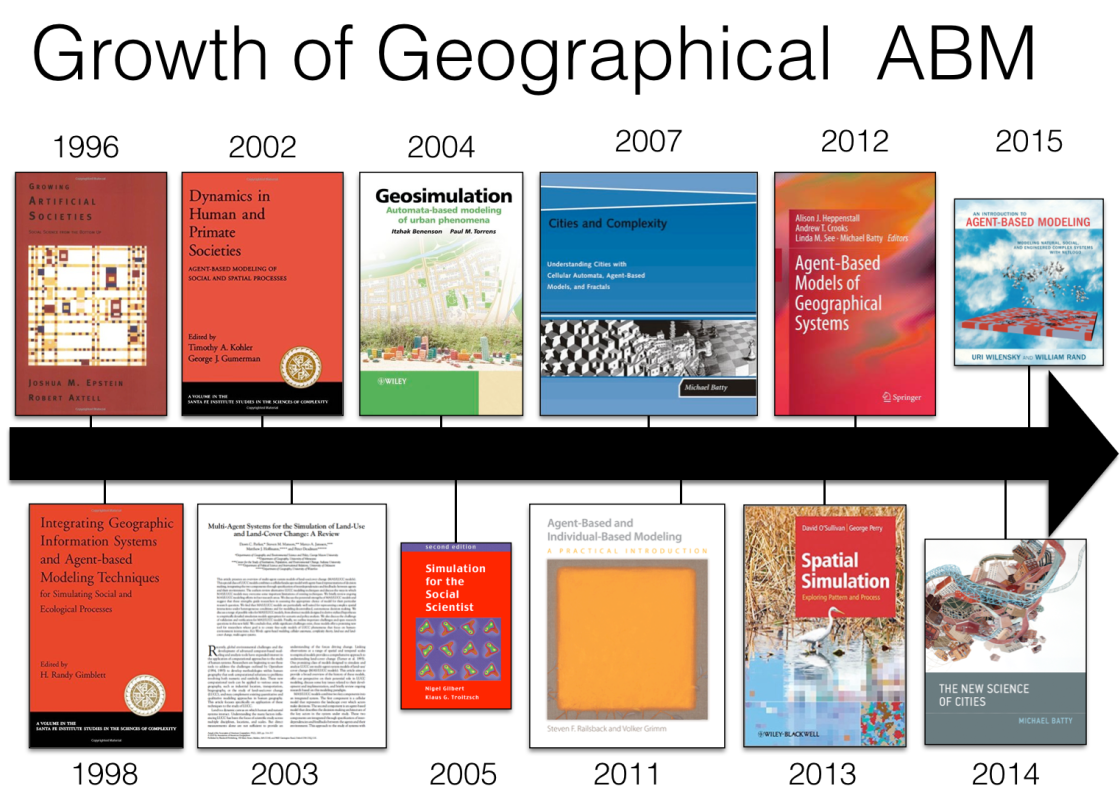ABM Congress, Washington (Alison Heppenstall)
Author: Professor Alison Heppenstall.

I attended the International Congress on Agent Computing at George Mason University (US) last month. It was organised to mark the 20th anniversary of the publication of Robert Axtell and Joshua Epstein‘s landmark work, Growing Artificial Societies and as such was both a celebration and a reflection on how far the discipline has progressed over the last 20 years.
While it is clear that in some areas there has been great gains, such as the size and complexity of ABMs (not to mention the sheer number of applications – Robert Axtell in his presentation gave the following figures based on a keyword search of publications: 1K papers per year on IBM; 10K per year on MAS and 5K per year on ABM), I see these gains as mainly attributable to advances in software and availability of data and not because we are tackling the big methodological problems. I would strongly agree with Axtell that ABMs are still ‘laboratory animals’ and not yet ready for uptake in policy. This view surprisingly contrasted with Epstein who in his opening remarks described ABM as a ‘mature scientific instrument’, perhaps nodding towards the large numbers of (often bad) ABMs that are continually appearing. However, Epstein did agree with Axtell in the discussion of several challenges/definitive work that ABM needs to take on such as creating cognitively plausible agents (accompanied by a big plug for Epstein’s recent book, Agent Zero, on this very topic), not getting side stepped by big data: “Data should be as big as necessary, but no bigger” (a nice play on the Einstein ‘models should be as simple as possible, but no simpler’) and calibrating to large scale ABMs.
It is this last point, that of calibration and validation that can be blamed for my grumpy mood throughout most of the Congress presentations. There was some fantastic work, creating very complex agents and environments, but these models were calibrated and validated using simple statistics such as R2! Complex models = (often) complex results, which in turn requires complex analysis tools. By the time that my presentation time came around on the last afternoon, I was in the mood for a bit of a rant…which is exactly what I did! But I’d like to think I did it in a professional way… I presented a joint talk with Andrew Crooks and Nick Malleson entitled “ABM for Simulating Spatial Systems: How are we doing?” which reflected on how well (or not) ABM of geographical systems has advanced over the last 20 years.

We argued that while as geographers we are very good at handling space (due to GIS), we’re not very good at representing the relationships and interactions (human to human and human to environment). We also need to look closely at how to scale up individual agents; for example how can we take an agent created at the neighbourhood level, with its own rules and explicit use of space and scale this up to the city level (preserving all the characteristics and behaviours of that agent)? Work needs to be done now to shape how we use Big Data to ensure that it becomes an asset to ABM, not a burden. And then I moved on to calibration and validation! It wasn’t all gloom, the presentation featured lots of eye candy thanks to Nick and Andrew.
While the congress brought together an interesting line up of interdisciplinary keynote speakers: Brian Arthur, Mike Batty, Stuart Kauffman and David Krakauer – all were men. Of the 19 posters and 59 presentations, only a handful were women. I find this lack of diversity disappointing (I refer here to gender, but this could equally be applied to other aspects of diversity). While women are in the minority in this discipline, we do have a presence and such an event reflecting on the past, and celebrating a promising future should have fully reflected this.
However, I don’t wish to end on a negative note, the Congress was fantastic in the breadth of work that it showcased, and because it was so small, it had a genuinely friendly and engaging feel to it. The last word should go to Epstein who I felt summarised up ABM nicely with the following: “As a young science, [it has made] tremendous progress and [has great] momentum”.
Reference:
Heppenstall, A., Crooks A.T. and Malleson, N. (2016), ABM for Simulating Spatial Systems: How are we doing? International Congress on Agent Computing, 29th-30th, November, Fairfax, VA.
